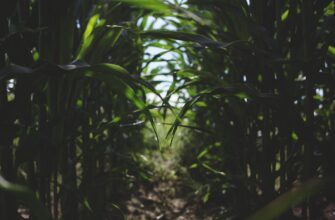Introduction: Navigating Low-Risk ADA Yield Farming
Yield farming ADA (Cardano) offers enticing rewards, but high-risk strategies often deter cautious investors. This guide explores how to yield farm ADA low risk by leveraging Cardano’s robust ecosystem. With its proof-of-stake consensus and growing DeFi landscape, ADA presents unique opportunities for sustainable passive income. We’ll break down proven low-volatility approaches, trusted platforms, and risk-mitigation tactics to help you earn rewards without sleepless nights.
What Is Yield Farming?
Yield farming involves lending or staking crypto assets in decentralized finance (DeFi) protocols to generate returns. Unlike traditional savings, it uses smart contracts to automate rewards distribution. Key components include:
- Liquidity Pools (LPs): Users deposit token pairs (e.g., ADA/USDC) to facilitate trading.
- Staking: Locking assets to support blockchain operations.
- Rewards: Earned in tokens or trading fees, often compounded for higher APY.
Why Cardano (ADA) for Low-Risk Yield Farming?
Cardano’s architecture prioritizes security and sustainability, making it ideal for risk-averse farmers:
- Proof-of-Stake Consensus: Energy-efficient and less volatile than proof-of-work chains.
- Formal Verification: Smart contracts undergo rigorous mathematical testing to reduce exploits.
- Growing Ecosystem: Platforms like SundaeSwap and Minswap offer audited, low-slippage pools.
- Stablecoin Integration: Pairs like ADA/Djed (Cardano’s stablecoin) minimize impermanent loss.
Top Low-Risk Yield Farming Strategies for ADA
Prioritize capital preservation with these approaches:
- Single-Asset Staking: Stake ADA directly via Cardano wallets (e.g., Yoroi, Daedalus) for ~4-5% APY with near-zero risk.
- Stablecoin Pair LPs: Provide liquidity for ADA/Djed or ADA/USDCoin pools to earn fees while hedging against ADA volatility.
- Blue-Chip Token Pairs: Farm ADA with established assets like ETH or BTC to reduce correlation risk.
- Auto-Compounding Vaults: Use protocols like Liqwid Finance to automatically reinvest rewards, boosting APY without manual effort.
How to Minimize Risks in ADA Yield Farming
Safety-first tactics for sustainable returns:
- Audit Platforms: Only use protocols with third-party security audits (e.g., CertiK or Quantstamp).
- Diversify: Spread investments across multiple pools and strategies.
- Monitor Impermanent Loss: Prefer stablecoin pairs or single-asset staking to avoid value divergence.
- Start Small: Test platforms with minimal funds before scaling.
Best Platforms for Low-Risk ADA Yield Farming
Trusted Cardano DeFi hubs for cautious farmers:
- SundaeSwap: Offers ADA staking and stablecoin LPs with APYs up to 8%.
- Minswap: Features low-fee ADA/Djed pools and single-sided staking.
- WingRiders: Focuses on audited, capital-efficient vaults for ADA and stablecoins.
- Cardano Native Wallets: Direct staking via Yoroi or Daedalus for baseline security.
FAQ: Yield Farm ADA Low Risk
Q: Is yield farming ADA safer than other cryptos?
A: Yes, due to Cardano’s peer-reviewed tech and emphasis on formal verification, reducing smart contract risks.
Q: What APY can I expect from low-risk ADA farming?
A: Typically 4-10% for single-asset staking or stablecoin LPs—lower than high-risk farms but more sustainable.
Q: How do I avoid impermanent loss with ADA?
A: Use single-asset staking or pair ADA with stablecoins like Djed to minimize price divergence.
Q: Are Cardano yield farming returns taxable?
A: Yes, rewards are taxable income in most jurisdictions. Track transactions using tools like CardanoScan.
Q: Can I lose my ADA in yield farming?
A: Risk exists via smart contract exploits or volatile LP pairs. Mitigate by choosing audited platforms and stablecoin-focused strategies.








